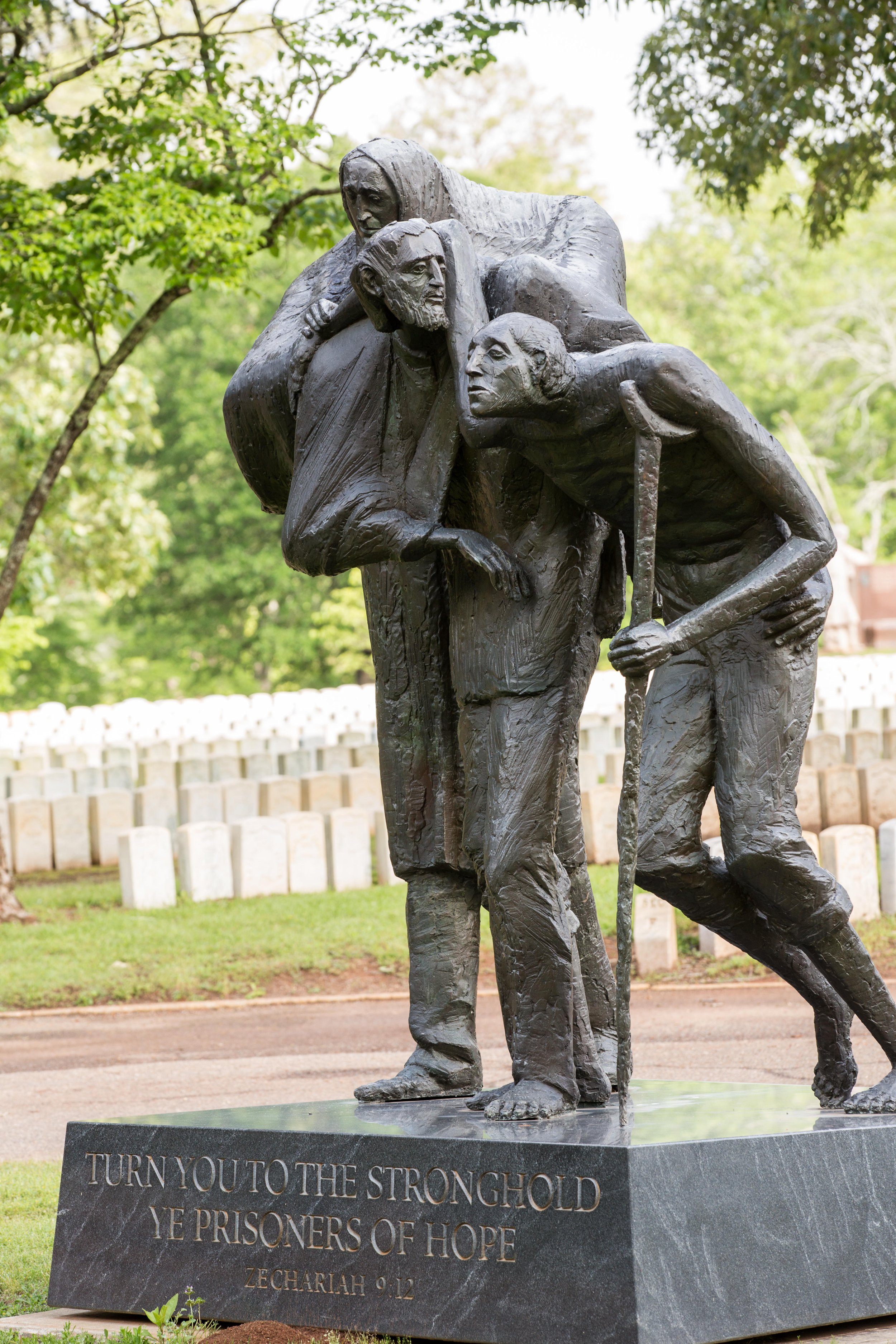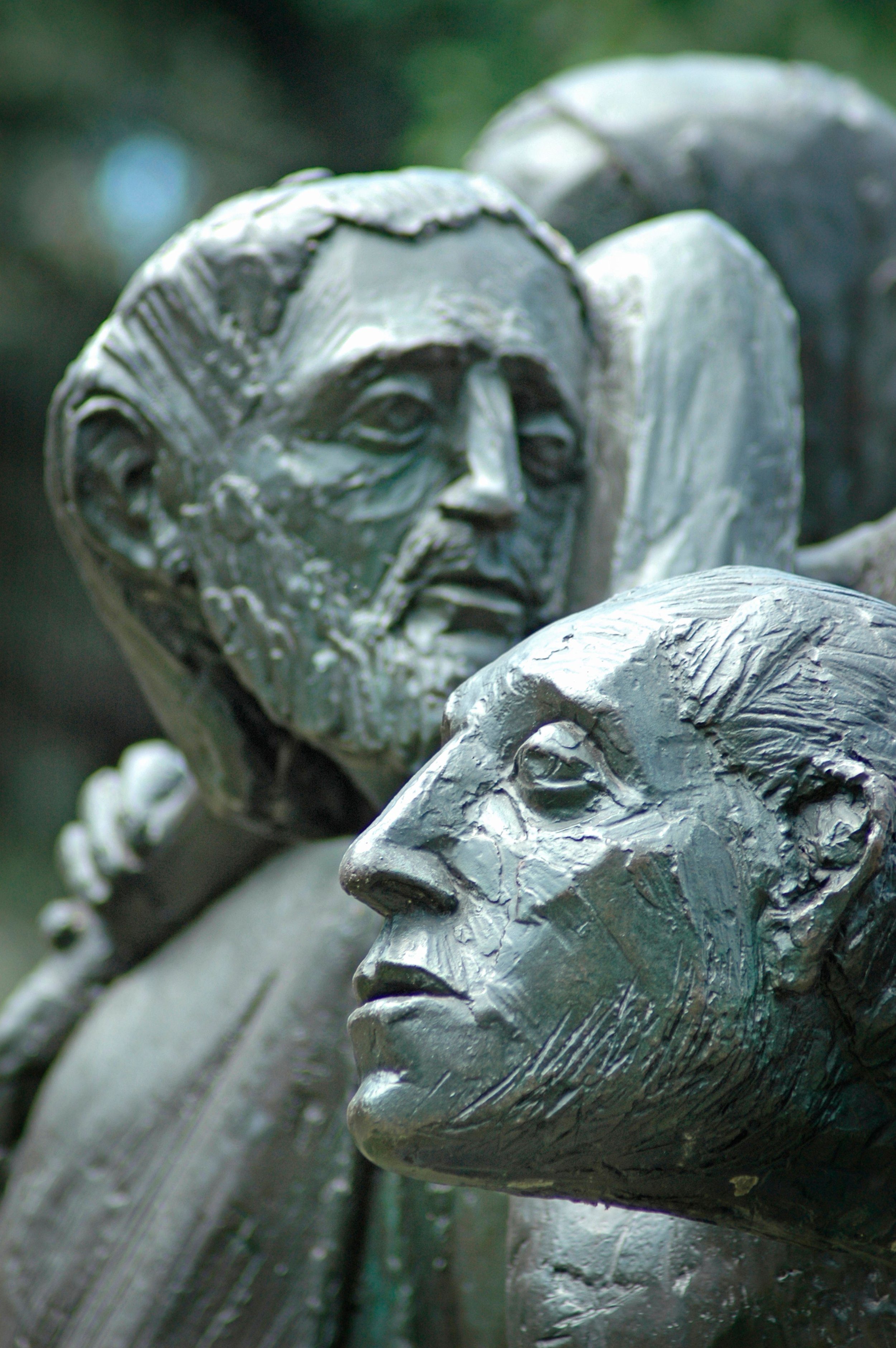“I was thinking about how I would do this. It was 1972, and prisoners of war from Vietnam were returning.”
Statement by the Artist
Prisoners of War Memorial, Georgia Memorial, Andersonville National Historic Site
by William J. Thompson
“The motivating force behind this memorial was my desire to portray the universal suffering and courage of prisoners of all American wars, and their determination to survive individually and as a group. At the time I was thinking about how I would do this, it was 1972, and prisoners of war from Viet Nam were returning. I was affected by the solidarity, the courage, and the brotherhood they exhibited in their suffering, to help not only themselves but each other, to survive.
My challenge was to make a sculpture that would portray these qualities in a direct, graphic way, so that the viewer would be affected and know, just by looking, that here was courage and suffering. Even a child, without any explanation, should sense what the sculpture was trying to say.
My aim was to make a vital, moving sculpture that would speak directly to the senses without a lot of unnecessary detail, and through form, to get into the essence of the experience.
I chose three figures because of the dynamic quality of the interaction of the almost mystical number three. There was a great opportunity here to devise forms that would be compelling in themselves, as well as tell the story of prisoners of war. (cont.)
“In 1972 the Georgia Natural Resources Commission decided to commemorate the lost prisoners of Andersonville and accordingly instituted a state-wide competition among sculptors.
William Thompson, Professor of Art at the University of Georgia, won that contest with his design for a tableau of three figures, and by 1975 the clay of the original model was ready for the foundry—for its translation into bronze to become what is now known as The Andersonville Memorial.
The Memorial was to transcend local history and stand as a monument to all American prisoners—perhaps all prisoners—in all wars. The work was, also, to have a secondary but no less important function. It was to function as a healing talisman—not only between North and South—but for people everywhere... “
—Graham Collier







